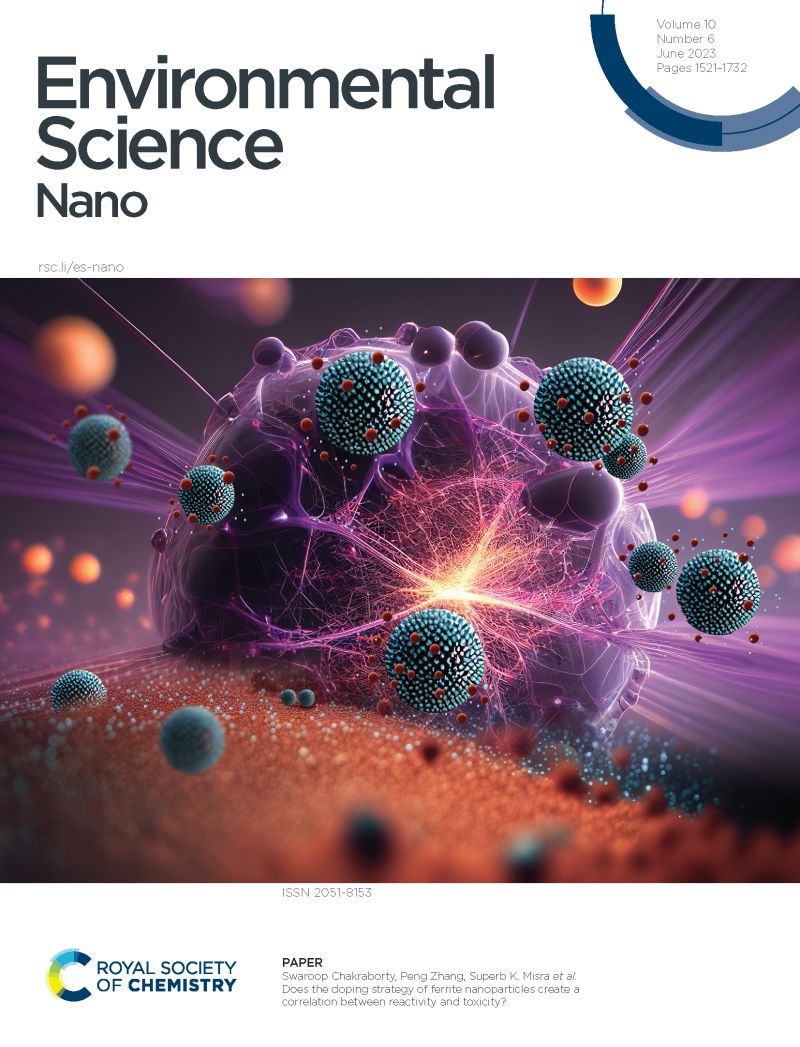Ternary 3D/2D/3D direct dual Z-scheme MOF-on-MOF-derived -Fe2O3/g-C3N4/Fe-MOF photocatalyst for boosted sunlight-driven removal of metronidazole: Effect of co-existing ions, mechanistic insights, and water matrices
IF 5.8
2区 环境科学与生态学
Q1 CHEMISTRY, MULTIDISCIPLINARY
引用次数: 0
Abstract
A direct solid ternary dual Z-scheme photocatalyst, 3D/2D/3D -Fe2O3/g-C3N4/Fe-MOF (FCM), was fabricated for efficient removal of metronidazole (MTZ) under sunlight irradiation. About 98.5 % of 25 mg/L MTZ was effectively degraded with a catalyst dosage of 20 mg/50mL under 90 min of sunlight irradiation. Moreover, a total organic carbon (TOC) removal of 78.5 % was achieved within the same duration under optimal conditions. The simultaneous transfer of photogenerated electron-hole pairs in the two Z-scheme pathways described here can significantly accelerate the charge separation and enhance ROS production. The effect of catalyst dose, initial MTZ concentration, inorganic cations (Na+, Mg2+, Ca2+, and Al3+), inorganic anions (Cl-, CO32-, NO3-, and SO42-), organic compounds (SDS, urea, HA, and acetone), and different water matrices on the degradation of MTZ by FCM was analyzed systematically. Furthermore, comprehending the spatial separation and transfer of photogenerated charge carriers, as well as the formation of ROS at the heterojunction interface, is critical for understanding photocatalytic degradation mechanisms. Consequently, a plausible MTZ breakdown route and charge transfer pathway were established based on the radical scavenging experiments, ESR and LCMS analysis. A high degradation efficiency of the dual Z-scheme MOF-on-MOF-derived 3D/2D/3D -Fe2O3/g-C3N4/Fe-MOF photocatalyst under all simulated experiments and different water matrices highlights its excellent photoactivity and establishes its potential use in visible-light-driven photocatalytic application in wastewater remediation.源自 -Fe2O3/g-C3N4/Fe-MOF 的三元三维/二维/三维直接双 Z 型 MOF-on-MOF 光催化剂,用于促进阳光驱动的甲硝唑去除:共存离子、机理认识和水基质的影响
制备了一种直接固态三元双 Z 型光催化剂(3D/2D/3D -Fe2O3/g-C3N4/Fe-MOF(FCM)),用于在阳光照射下高效去除甲硝唑(MTZ)。催化剂用量为 20 mg/50mL 时,在 90 分钟的阳光照射下,约 98.5% 的 25 mg/L MTZ 被有效降解。此外,在最佳条件下,相同时间内总有机碳(TOC)的去除率达到 78.5%。光生电子-空穴对在本文所述的两个 Z 型途径中同时转移,可显著加速电荷分离并提高 ROS 生成。系统分析了催化剂剂量、MTZ 初始浓度、无机阳离子(Na+、Mg2+、Ca2+ 和 Al3+)、无机阴离子(Cl-、CO32-、NO3- 和 SO42-)、有机化合物(SDS、尿素、HA 和丙酮)以及不同水基质对 FCM 降解 MTZ 的影响。此外,理解光生电荷载流子的空间分离和转移以及异质结界面上 ROS 的形成对于理解光催化降解机制至关重要。因此,根据自由基清除实验、ESR 和 LCMS 分析,建立了合理的 MTZ 击穿路线和电荷转移途径。在所有模拟实验和不同的水基质条件下,双 Z 型 MOF-on-MOF 衍生 3D/2D/3D -Fe2O3/g-C3N4/Fe-MOF 光催化剂的降解效率都很高,这突出表明了其优异的光活性,并确定了其在可见光驱动的废水修复光催化应用中的潜在用途。
本文章由计算机程序翻译,如有差异,请以英文原文为准。
求助全文
约1分钟内获得全文
求助全文
来源期刊

Environmental Science: Nano
CHEMISTRY, MULTIDISCIPLINARY-ENVIRONMENTAL SCIENCES
CiteScore
12.20
自引率
5.50%
发文量
290
审稿时长
2.1 months
期刊介绍:
Environmental Science: Nano serves as a comprehensive and high-impact peer-reviewed source of information on the design and demonstration of engineered nanomaterials for environment-based applications. It also covers the interactions between engineered, natural, and incidental nanomaterials with biological and environmental systems. This scope includes, but is not limited to, the following topic areas:
Novel nanomaterial-based applications for water, air, soil, food, and energy sustainability
Nanomaterial interactions with biological systems and nanotoxicology
Environmental fate, reactivity, and transformations of nanoscale materials
Nanoscale processes in the environment
Sustainable nanotechnology including rational nanomaterial design, life cycle assessment, risk/benefit analysis
 求助内容:
求助内容: 应助结果提醒方式:
应助结果提醒方式:


